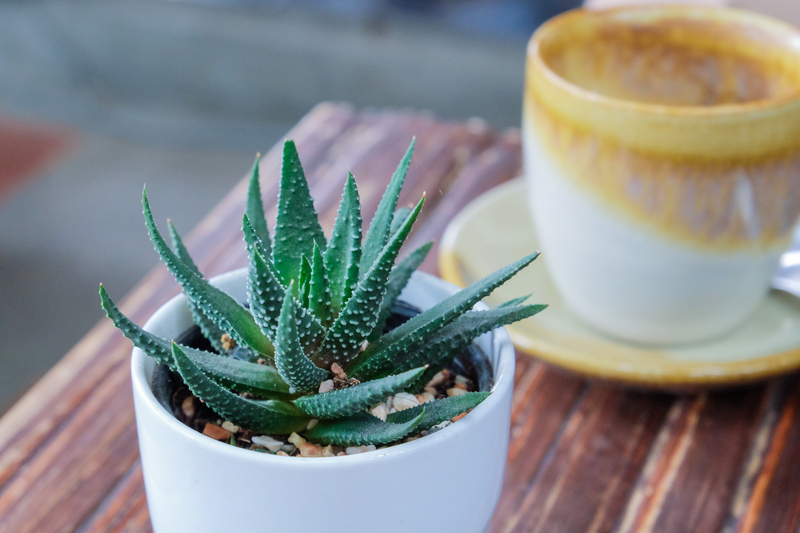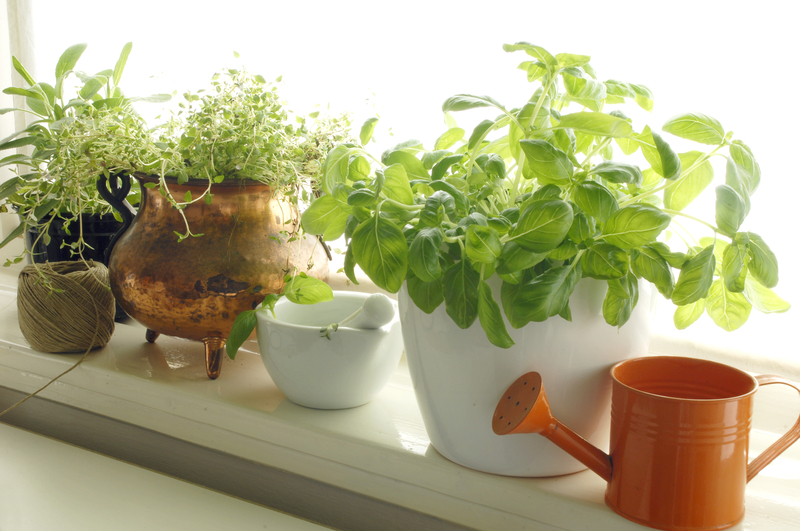All you need to know about container gardening
Posted on 24/09/2025
All You Need to Know About Container Gardening
Are you dreaming of a lush, vibrant oasis right on your balcony, rooftop, or even windowsill? Container gardening makes that possible, giving you the chance to grow flowers, herbs, vegetables, and even small fruit trees without a traditional backyard. From urban dwellers to seasoned gardeners, this method is rapidly gaining popularity for its flexibility, efficiency, and sheer beauty.
In this comprehensive guide, we delve into all you need to know about container gardening. You'll discover the fundamentals of the practice, learn smart tips for thriving plants, and explore the best ways to design your own patio paradise.
What Is Container Gardening?
Container gardening refers to growing plants exclusively in pots, planters, and other containers instead of directly in the ground. It's a perfect fit for those with limited outdoor space or poor soil conditions and allows unmatched control over your plants' environment.
Key Advantages of Container Gardening
- Mobility: Move your plants to chase the sun, avoid frost, or create instant design changes.
- Accessibility: Ideal for people with limited mobility, offering easy reach without heavy digging.
- Control: Manage soil type, moisture, and nutrients with precision.
- Versatility: Grow almost anything -- from culinary herbs to ornamental shrubs -- virtually anywhere.
- Pest and Disease Management: Easier to isolate and treat problems than in open ground.

Choosing the Right Containers
Selecting the right containers for your garden is a game-changer. Different materials and styles cater to various aesthetics and needs. Let's break down your options:
Container Materials
- Terracotta: Breathable and attractive, but can dry out quickly. Best for plants that prefer drier soil.
- Ceramic: Glazed pots retain moisture and come in stylish designs, but are heavy and fragile.
- Plastic and Resin: Lightweight, affordable, and versatile. These retain moisture well but may become brittle in extreme temperatures.
- Metal: Modern and sleek, but can heat up or rust, sometimes harming plant roots.
- Wood: Natural and insulative, but may rot over time unless treated.
Sizing and Drainage:
Larger pots hold more soil, helping roots develop and extending the period between watering. Whatever you choose, ensure each container has sufficient drainage holes to prevent soggy roots and root rot.
Picking the Best Potting Mix for Container Gardening
All you need to know about container gardening soil: The potting mix you use is a critical factor in your plants' health. Unlike in-ground soil, a quality potting mix is specifically blended for container plants.
- Soilless Mixes: Generally composed of peat moss or coconut coir, perlite, and vermiculite. Lightweight and excellent for drainage.
- Composted Mixes: Include organic matter that helps retain nutrients and moisture.
- Specialty Mixes: Designed for specific plants such as cacti, succulents, orchids, and acid-loving plants.
Never use garden soil in containers as it can become compacted, hinder drainage, and harbor pests or diseases.
Choosing Plants for Containers
When it comes to container gardening plants, your options are almost limitless. Here's how to select the right flora:
- Sun Exposure: Match plant choice with the available sunlight. Herbs and many vegetables need 6+ hours of direct sun, while ferns and impatiens tolerate shade.
- Growth Habit: Combine upright, trailing, and filler plants for visual interest (think the classic 'thriller, spiller, filler' formula).
- Root Size: Opt for compact or dwarf varieties in smaller pots, and reserve large containers for veggies like tomatoes or small fruit trees.
- Companion Planting: Group plants with similar water, light, and nutrient needs.
Popular Choices for Container Gardens
- Herbs: Basil, mint, chives, thyme, rosemary, parsley
- Vegetables: Peppers, lettuce, radishes, cherry tomatoes, spinach
- Flowers: Petunias, marigolds, geraniums, begonias, pansies
- Small Fruits: Strawberries, blueberries (in acidic mix), dwarf citrus
- Ornamentals: Ferns, succulents, ornamental grasses, coleus
Planting Techniques for Successful Container Gardening
Ready to plant? Follow these essential steps for successful container gardening:
- Prepare the Pot: Ensure all containers are clean, with adequate drainage holes. For very large pots, add a layer of gravel at the bottom to enhance drainage (but don't fill half the pot -- you still need room for soil!).
- Add Potting Mix: Fill with a quality potting mix, leaving a couple of inches at the top for watering.
- Arrange Your Plants: Loosen roots gently before planting. Position taller plants in the center or back and trailing plants at the edges.
- Planting Depth: Plant at the same depth as in the nursery pot, unless otherwise directed.
- Water Thoroughly: After planting, water until it drains from the bottom.
Essential Container Garden Care
Maintaining healthy, thriving containers is an ongoing process:
Watering Container Gardens
- Frequency: Containers dry out faster than in-ground gardens -- check daily during hot spells.
- Technique: Water deeply until excess drains out; avoid shallow, frequent sprinklings.
- Self-Watering Pots: These can be a good investment for busy or forgetful gardeners.
Fertilizing Your Potted Plants
- Sustained Feeding: Use slow-release granular fertilizers mixed into the soil at planting time.
- Supplemental Feeding: Apply liquid fertilizer every 2-4 weeks during the growing season, especially for heavy feeders like tomatoes.
Pruning and Deadheading
- Deadheading: Remove spent flowers regularly to encourage further blooming.
- Pruning: Trim straggly growth to maintain an attractive shape and promote bushiness.
Pest and Disease Control
- Regular Inspections: Check leaves and stems for aphids, spider mites, whiteflies, and fungal spots.
- Quick Treatment: Isolate affected plants and use appropriate controls, organic or chemical as needed.
Design Ideas for Beautiful Container Gardens
The beauty of container gardening lies in its creative potential. Here are some design tips to make your potted paradise stand out:
- Mix Heights and Textures: Contrast tall, spiky plants with delicate, trailing ones for dynamic arrangements.
- Color Coordination: Choose complementary or monochromatic color schemes for a unified look.
- Seasonal Rotation: Switch out plants seasonally to keep the display fresh year-round.
- Groupings: Cluster several pots together of varying sizes to create a mini garden effect.
- Themed Gardens: Try a Mediterranean herb garden, a butterfly-friendly flower collection, or an edible salad bowl.
Vertical and Hanging Gardens
- Maximize small spaces with vertical planters, trellises, or tiered shelving units.
- Hang baskets from railings or hooks to add color at eye-level.
Solving Common Container Gardening Problems
Even the most well-tended container garden may encounter challenges. Here's all you need to know about troubleshooting container gardening issues:
- Drooping Plants: Usually a sign of under-watering but can also indicate root rot from excessive moisture.
- Yellow Leaves: May signal nutrient deficiencies or overwatering.
- Stunted Growth: Check for rootbound plants -- roots circling inside the pot. Repot if necessary.
- Pests: Isolate the offending pot and use gentle sprays or neem oil for infestations.
Container Gardening Tips for Every Season
Spring
- Start seeds indoors or direct-sow cool-weather plants like lettuce and pansies.
- Clean and disinfect all pots before planting.
Summer
- Prioritize watering, especially during heat waves.
- Feed blooming plants with liquid fertilizer every 2-3 weeks.
Autumn
- Plant cold-tolerant annuals or ornamental cabbages for fall color.
- Clean up summer debris and compost spent plants.
Winter
- Use frost-resistant containers for perennial plantings.
- Move pots to sheltered spots or indoors if possible in freezing climates.
- Switch to hardy evergreens, winter-blooming heathers, or just display decorative branches and seasonal arrangements.
Container Gardening for Small Spaces & Urban Living
All you need to know about container gardening in apartments, balconies, and terraces: Even with the smallest outdoor (or indoor) zones, well-designed containers can transform your home. Utilize walls, railings, and underused corners. Choose compact plants, vertical structures, and lightweight planters to maximize usable area.
Eco-Friendly Container Gardening Tips
- Recycle and Reuse: Upcycle old buckets, crates, and even colanders for unique planters.
- Organic Practices: Choose peat-free compost, avoid synthetic pesticides, and encourage beneficial insects.
- Efficient Watering: Use mulch or water-retaining crystals and collect rainwater to reduce waste.

Frequently Asked Questions About Container Gardening
Can I grow vegetables in containers?
Absolutely! Many vegetables adapt well to container life. Choose varieties bred for small spaces and provide ample sunlight and water.
How often should I water my container garden?
The frequency depends on plant type, weather, and pot size, but most containers require daily checks, especially in warm conditions.
Do I need to repot my plants every year?
Fast-growing annuals can start fresh each season. Perennials may need repotting every 1-2 years to prevent root crowding.
Can container gardens attract pollinators?
Yes! Choose bright, nectar-rich flowers like lavender, marigolds, or zinnias to welcome bees and butterflies.
Conclusion: Start Your Container Gardening Adventure Today
From compact balconies to spacious patios, container gardening brings nature's beauty within arm's reach. With endless possibilities for creativity and experimentation, it's the perfect gardening style for beginners and experts alike. Whether you're growing fresh herbs for your kitchen or cultivating a colorful refuge filled with blooms, following these comprehensive container gardening tips will help you achieve satisfying results.
So, gather your pots, select your favorite plants, and let this guide be your companion as you create a thriving container garden oasis, no matter where you call home.



